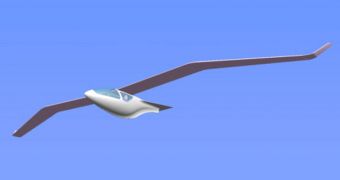At the meeting of the American Physical Society's (APS) Division of Fluid Dynamics, held in Long Beach, California, researchers presented a departure from the classic design of aircraft. The goal was to avoid the classic shape of an airplane, and the result was an innovative, seagull-like aircraft.
The main driving force behind the new project was the development of an aircraft shape that would be a lot more fuel efficient than the existing, “tube-with-wings” design. The entire concept for the airplane was modeled around this need.
Researchers in South Africa collaborated with colleagues from the United States for this investigation. Northwest University expert Joachim Huyssen and University of Southern California (USC) professor Geoffrey Spedding were the main researchers on the project.
Spedding says that one of the main things that the team wanted to achieve was creating an airplane that had a low amount of drag. The resulting design features crooked wings, that resemble those of a bird caught in mid-flight.
The body of the aircraft can best be described as chubby, whereas its tail is rather short, which is uncommon for aircraft in general. While spectacular, the new approach still needs to demonstrate its efficiency in practical applications, the team admits.
Usually, the greatest innovations are developed when people turn to nature for inspiration, but, historically, this was not the case with human flight and aviation. Success came as soon as engineers stopped looking for methods of mimicking the behavior of birds.
When the scientists began designing an aircraft from scratch, success came within a matter of years. The thing that allowed us to move forward was separating the lift generators (wings) from the thrust generators (engines). Birds' wings fulfill both these functions at once.
The new research was motivated by the need to increase fuel efficiency. “in this day and age of fuel prices where 1 or 2 percent can make a huge difference, it's worth wondering if there could be improvements,” Spedding believes.
The most important feature of the new design is replacing the long tail with a shorter one, and transferring pitch control to the wings. They can be bent slightly, eliminating the need for a tail that increases drag.
Even if the resulting body is a lot chubbier than usual, it is also a lot more streamlined than in other aircraft, the researchers say. They presented the design at the APS meeting yesterday, November 21, LiveScience reports.

 14 DAY TRIAL //
14 DAY TRIAL //